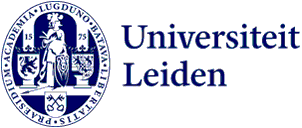
Understanding superconductivity comes closer with major ERC grant for Milan Allan
Physicist Milan Allan will build an instrument that will bring superconductivity research further. He has been awarded an ERC Consolidator Grant of 2 million euros over the next five years. With his PairNoise programme he aims to detect paired electrons as they occur just above the temperature at which superconductivity takes place.
Allan has already done much successful research into superconductivity: an almost magical property of specific materials to conduct electricity without any energy loss, when cooled below a certain temperature. Only very few of these materials are understood; finding a theory that works for all of them is an ongoing quest in physics.
Instruments to measure anything we need to measure
One of the methods researchers use to do this is called Scanning Tunnelling Microscopy and Spectroscopy (STM/STS), in which a metal tip skims across the surface of a material to visualise the atomic lattice. Allan and his colleagues are continuously working on new instrumentation. 'We are building exactly the instruments to measure what we need to measure to gain more understanding.'
Electrons can also pair up above superconductivity temperature
Until last year, the idea was that superconductivity occurs as soon as electrons pair up. Allan's instruments showed that electrons also appear in pairs when the material is slightly less cold and does not act as a superconductor. Physics now wants to know all about this, and Allan’s team knows how to measure it.
A radically new electron pair microscope
'With PairNoise, I will develop and build a radically new electron pair microscope – based on a proof-of-concept instrument developed in my group. It can detect electron pairs without superconductivity. It combines scanning tunnelling microscopy (STM), which enables atomic resolution, and shot-noise spectroscopy, which enables unambiguous determination of pairing.'
'Our research is primarily driven by the wish to understand the fundamental working of nature'
'With this instrument we will determine the nature of the state above transition temperature in the most interesting superconductors. We will also conclusively determine whether some of quantum materials’ most mysterious properties are due to pairing, and find what limits superconductivity at even higher temperatures in quantum materials.'
Superconductivity research might have a world-changing impact
Superconductivity research originated in Leiden. In 1911 Leiden physicist Heike Kamerlingh Onnes discovered the phenomenon of superconductivity. Only very few of these materials are understood; finding a theory that works for all of them is an ongoing quest in physics. Perhaps such a theory would even allow us to find materials that superconduct at room temperature, which will have a world-changing impact. For example, large power-consuming data centres could become energy neutral, we would be able to transport electricity without resistance and wind mills maximize their efficiency.
But actually Allan’s passion is to understand how it works
Given Allan's importance and previous success, one wonders if it is not natural for him to be allowed to continue his research. 'Certainly not. There are other grants that I applied for recently which I did not get. Although superconductivity may eventually have attractive applications, to be honest, these will not occur in the short term, and our research is primarily driven by our wish to understand the fundamental working of nature. This kind of research has been under great pressure in the Netherlands over the last ten years. With this ERC grant I can still continue my research in Leiden, and I am very happy about that.'
Text: Rianne Lindhout
